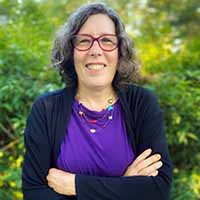Vanguard's Primecap Mutual Funds Reopen to Investors: What to Know
In June, Vanguard fully reopened Vanguard Primecap and Vanguard Primecap Core.

For the first time in at least 15 years, new investors can buy shares in two of Vanguard’s best-regarded actively managed mutual funds. In June, Vanguard fully reopened Vanguard Primecap (VPMCX) and Vanguard Primecap Core (VPCCX). Both funds are run by Primecap Management, described by Jeff DeMaso, editor of The Independent Vanguard Adviser newsletter, as, “arguably, one of the best active managers out there.”
Vanguard locked new investors out of Primecap in 2004 and out of Core in 2009, limiting existing investors to adding no more than $25,000 a year. The funds’ strong performances had attracted more money than the managers felt they could put to work in the long-term, value-priced growth opportunities they seek.
But in recent years, performance — especially at Primecap — has been lumpy. Investors have withdrawn more than $38 billion from Primecap since 2019 (leaving it with assets of $76.1 billion), and nearly $5 billion from Core (now with $13.2 billion). And, says Ryan Barksdale, who oversees Vanguard’s active stock funds, “the market has evolved,” creating new investment opportunities for additional cash. Both funds require a minimum initial investment of $3,000 for investor-class shares.

Sign up for Kiplinger’s Free E-Newsletters
Profit and prosper with the best of expert advice on investing, taxes, retirement, personal finance and more - straight to your e-mail.
Profit and prosper with the best of expert advice - straight to your e-mail.
The two funds hold many of the same stocks. Both are tilted toward health care and industrial firms, and have benefited from a boom in Eli Lilly, which makes up more than 10% of each portfolio. Lilly has returned 94% over the past 12 months.
Although it can invest in stocks of any size, Primecap is currently weighted slightly more toward large companies. Charging an expense ratio of 0.38%, it has returned 27.5% over the past 12 months, beating the 24.6% return of the S&P 500. The fund gained 15.5% annualized over the past 15 years, compared with 14.8% for the S&P 500. Core, with expenses of 0.46%, has returned 25.4% over the past year; 14.7% over the past 15 years.
Note: This item first appeared in Kiplinger Personal Finance Magazine, a monthly, trustworthy source of advice and guidance. Subscribe to help you make more money and keep more of the money you make here.
Related Content
Profit and prosper with the best of Kiplinger's advice on investing, taxes, retirement, personal finance and much more. Delivered daily. Enter your email in the box and click Sign Me Up.

Kim Clark is a veteran financial journalist who has worked at Fortune, U.S News & World Report and Money magazines. She was part of a team that won a Gerald Loeb award for coverage of elder finances, and she won the Education Writers Association's top magazine investigative prize for exposing insurance agents who used false claims about college financial aid to sell policies. As a Kiplinger Fellow at Ohio State University, she studied delivery of digital news and information. Most recently, she worked as a deputy director of the Education Writers Association, leading the training of higher education journalists around the country. She is also a prize-winning gardener, and in her spare time, picks up litter.
-
 Stock Market Today: S&P 500, Nasdaq Near New Highs
Stock Market Today: S&P 500, Nasdaq Near New HighsThe S&P 500 hasn't hit a new high since February. It's been since December for the Nasdaq.
-
 New Trump Incentive Could Help Donors Avoid Capital Gains Tax
New Trump Incentive Could Help Donors Avoid Capital Gains TaxTax Policy As U.S. Senate Republicans mark up their version of the One Big Beautiful Bill Act, one provision could give some donors a major tax break.
-
 Stock Market Today: S&P 500, Nasdaq Near New Highs
Stock Market Today: S&P 500, Nasdaq Near New HighsThe S&P 500 hasn't hit a new high since February. It's been since December for the Nasdaq.
-
 The Bull Case for the Second Half of 2025
The Bull Case for the Second Half of 2025This strategist sees a volatile market segueing to a strong close this year.
-
 7 Essential Investing Rules We All Should Know
7 Essential Investing Rules We All Should KnowThe best time to start investing is right now. That's just one vital rule investors should be familiar with. Here are six more.
-
 These Are the Key Tariff Issues to Watch in Coming Months
These Are the Key Tariff Issues to Watch in Coming MonthsWhile they're not dominating headlines right now, tariffs are not over. Some key dates are coming up fast that could upend markets all over again.
-
 Technology Unleashes the Power of Year-Round Tax-Loss Harvesting
Technology Unleashes the Power of Year-Round Tax-Loss HarvestingTech advancements have made it possible to continuously monitor and rebalance portfolios, allowing for harvesting losses throughout the year rather than just once a year.
-
 The Fiduciary Firewall: An Expert's Five-Step Guide to Honest Financial Planning
The Fiduciary Firewall: An Expert's Five-Step Guide to Honest Financial PlanningArmed with education and awareness, you can avoid unethical people in the financial industry by seeking fee-only fiduciaries and sharing your knowledge with others.
-
 Stock Market Today: Stocks Struggle to Sustain Gains
Stock Market Today: Stocks Struggle to Sustain GainsMixed messages from multiple sources continue to make for a messy market for investors, traders and speculators.
-
 What to Do and What Not to Do When Markets Get Turbulent
What to Do and What Not to Do When Markets Get TurbulentFollow these tips and strategies to help you navigate investing turbulence.
